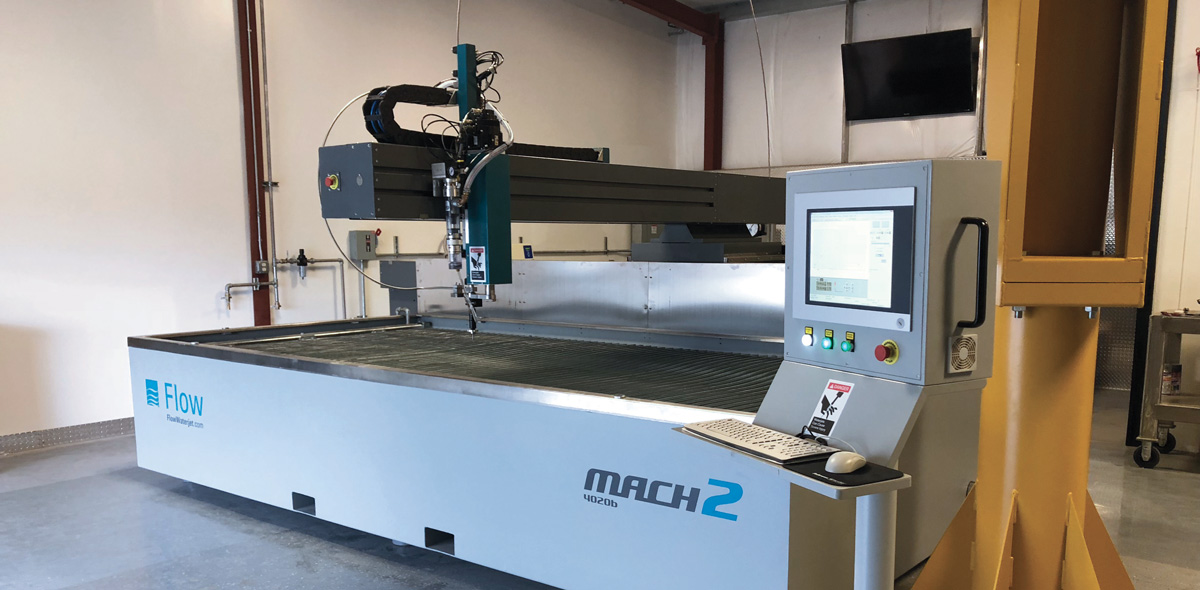att Shaug has been around the fabrication shop for as long as he can remember. His father, Jerry Shaug, started Shaug Construction nearly 30 years ago and brought his son to work from a young age. “I was pretty much born into the fabrication world,” says current owner Matt Shaug.
The Denair, California, company provides onsite aseptic welding and fabrication for food and beverage equipment makers. The work ranges from simple process tanks to complex evaporators.
Shaug previously used plasma cutting but found that neither his workers nor his customers wanted to deal with the cleanup and less-than-perfect accuracy. After moving away from plasma cutting, Shaug found that farming out waterjet cutting resulted in less than desirable finishes.
“We got busier and that led to us take a closer look at our cutting methods,” Shaug says. “I didn’t have the control I needed. I am very particular and, once I realized sending out work wasn’t getting us the results we needed, it was time to look into investing in our own equipment.”
Field crews of 12 to 20 workers must meet strict time constraints to finish each job, so being able to make parts on demand and a steady increase in the amount of jobs the firm won moved Shaug to waterjet cutting. In December 2018, the company acquired JetCut Manufacturing LLC, also located in Denair.
“Demand [for fabricated parts] has always been there but I farmed out a lot of parts and fabrication work because we simply didn’t have the proper equipment to cut and form parts that were needed,” Shaug says.
Strategic purchases followed, including a press brake, shear and a couple of different rolls that helped Shaug handle the additional work.
 Sending out work wasn’t getting us results. It was time to [invest] in our own equipment.
Sending out work wasn’t getting us results. It was time to [invest] in our own equipment. 
“Our waterjet operator has become more fluent with the 3D program,” Shaug says. “We use Inventor software along with FlowXpert, which comes with the Mach 500 and on all Flow 5-axis machines. I can already see the [future] need for the 5-axis capability, especially with countersinks on hardened material.”
FlowXpert is a CAD drawing program that “gives you all of the features you need to design intricate parts and the power to bring in all of the common file types,” says Evan Washington, senior applications specialist at Flow. “If you have other CAD software you design in, that is great—open your file in Flow Xpert and, in a few clicks, your solid model is pathed and ready for the waterjet.”
If customers don’t have CAD software, they can design in FlowXpert solid models for the waterjet “or anything else for that matter,” he adds. “It’s a fully featured and powerful CAD program on its own.”

Separation of the catcher tanks from the motion system prevents damage to the motion system, which otherwise would occur from dropping heavy plate or bumping with forklifts, Washington says, adding, “All of this is aimed at maximizing uptime and productivity.”
Shaug knew that whatever machinery he selected had to work quickly and accurately. Some jobs require Shaug to run sheet for 15-hour shifts. He found the best way to keep that work, and to pave the way to secure additional new business, was to keep investing in Flow waterjets. “We needed more machines to keep up,” Shaug says. “We need speed and, with each new Flow machine, we find that we are able to keep them fed with material at a consistent rate.”
JetCut Manufacturing, Denair, California, 209-614-3502.